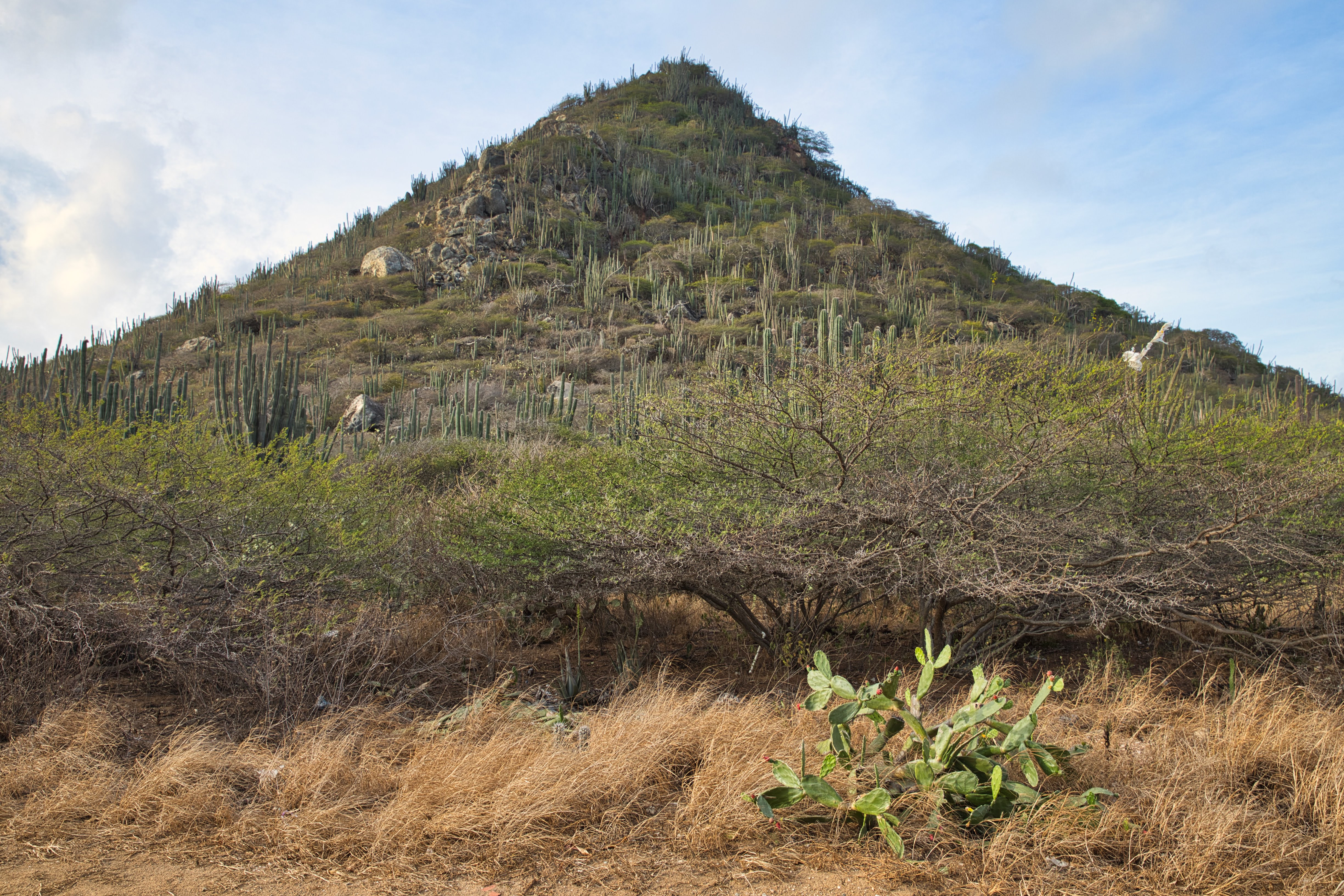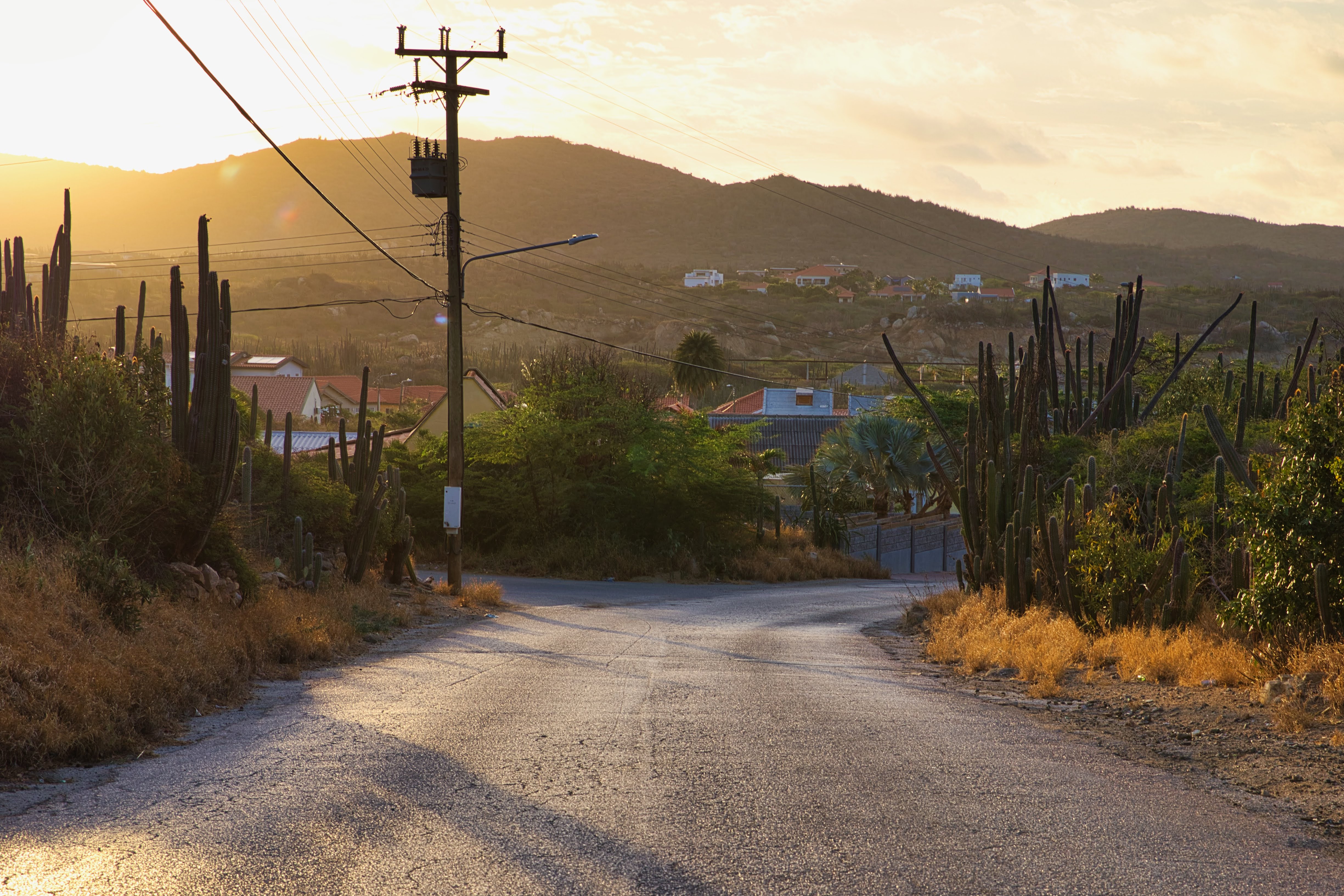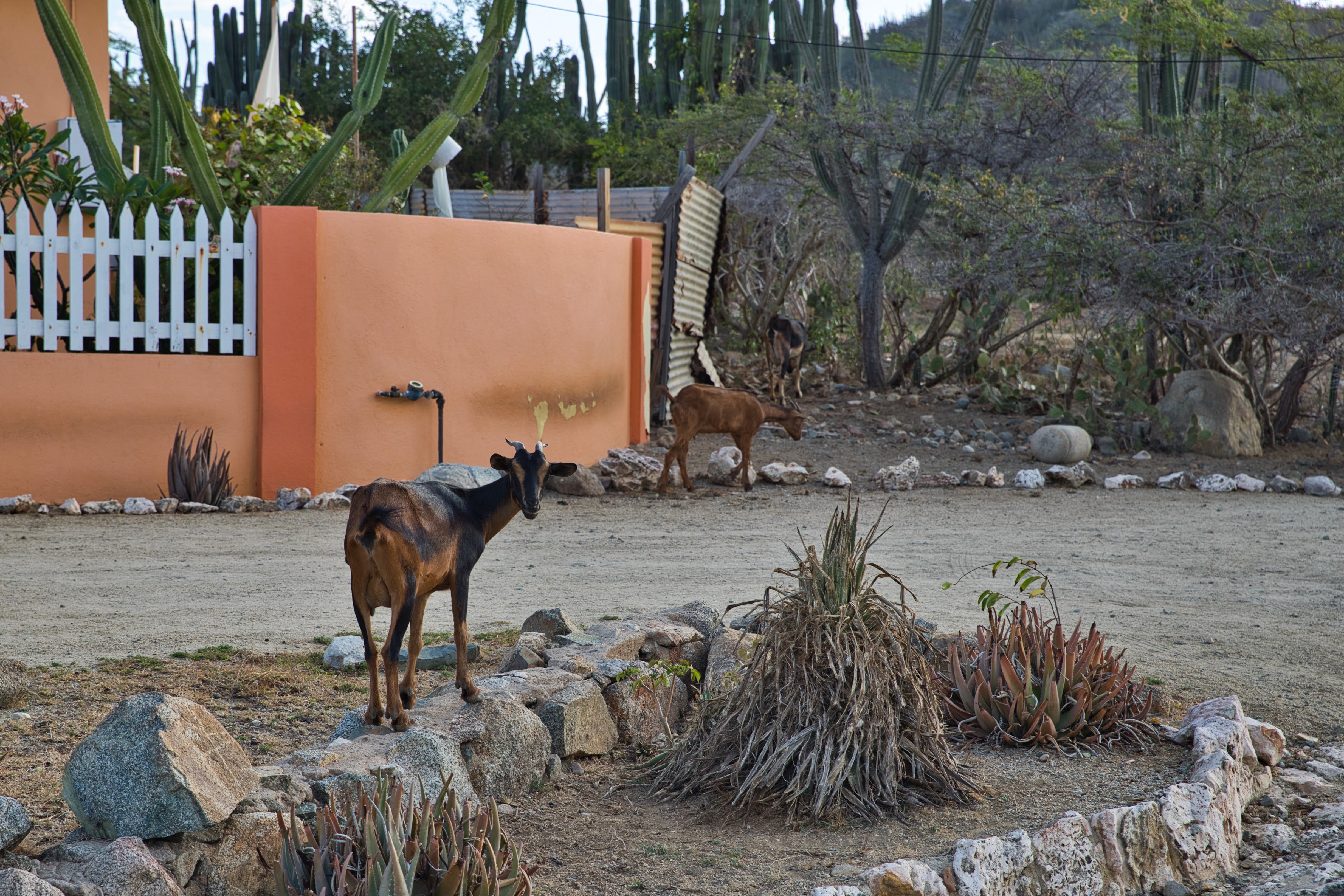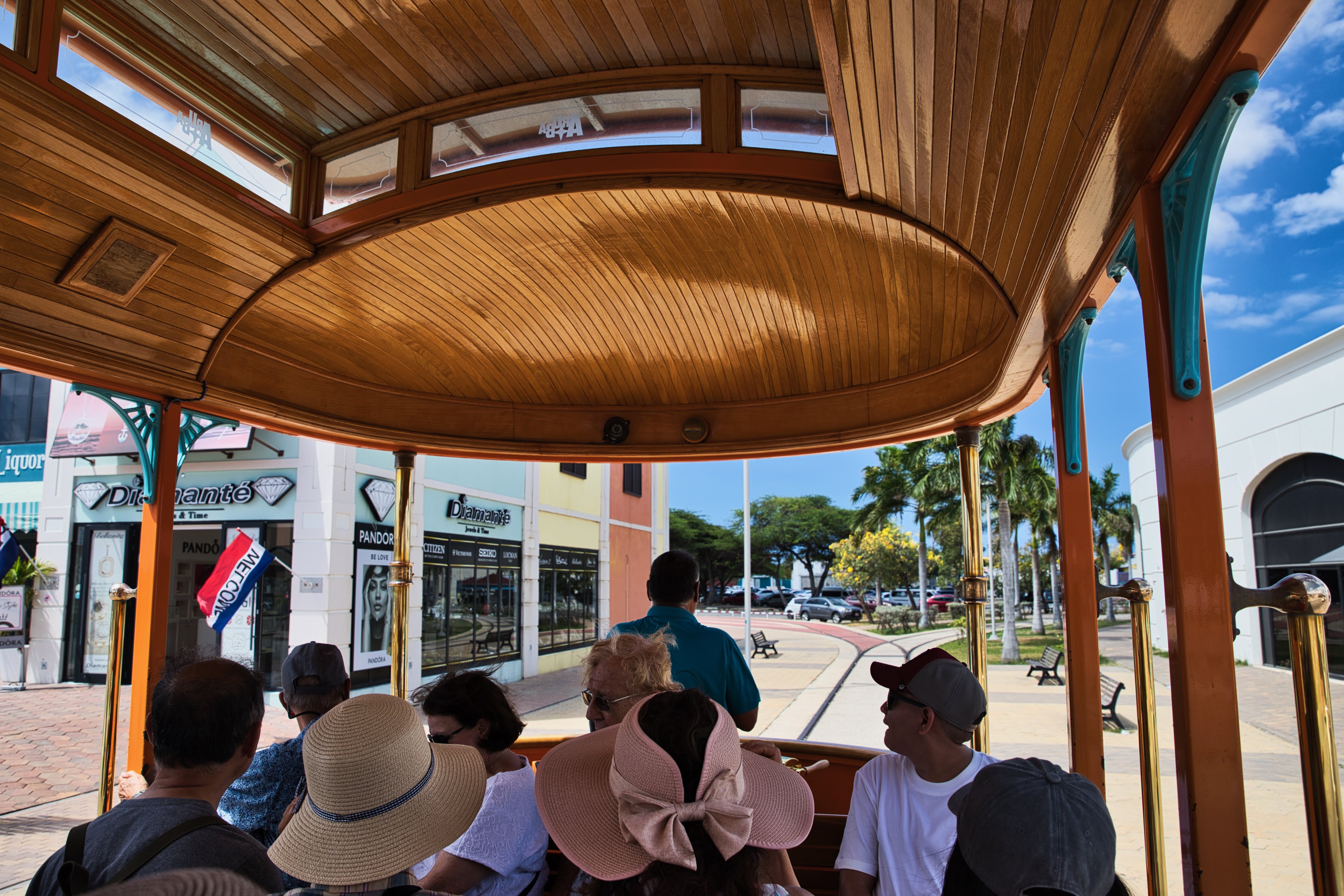Aruba
beach
Caribbean
desert
hiking
Bom Dia Aruba: A Caribbean Island That’s Not What You Expect
5/23/2025They call it One Happy Island, and to be fair, Aruba lives up to its nickname. Beneath the polished glamour of upscale resorts and year-around sunshine, Aruba is actually full of surprises. For starters, I had no idea what language to greet people in. “Hola” felt natural to me - this is the Caribbean, right? But that wasn't how locals greeted each other. After some eavesdropping, I cracked the code: “Bom Dia.” Not Dutch, not Spanish, but Papiamento - a mix of Portuguese, Spanish, Dutch, and African languages. This basically sums it up: Aruba isn’t what you expect, and that’s exactly why it’s worth exploring.
What surprised me most about Aruba wasn’t just the language - it was the nature. I didn't expect lush tropics as I did my research about the island, but I was still surprised to find such arid, desert climate with giant cacti, acacia trees with huge spikes, and sun-burned volcanic rocks.
The air was salty, the skies endlessly blue, and - god blessed this place - there were no mosquitoes or sand flies due to constant eastern trade winds from the east.
One early morning, I caught a local bus and hiked up Hooiberg Mountain, the tallest pile of rocks on this otherwise flat island. I almost had to use my tripod to brush off a few stray dogs that threatened by passage to the trail head.
The hike was a strenuous climb of 587 concrete steps, but the reward was to witness a sunrise when the land glows gold and the whole island is slowly waking up.
At the summit, I was greeted not just by panoramic views, but by a half dozen goats happily feasting on cacti and acacia trees.
My wife and I decided to skip renting a car in Aruba, thinking we could totally rely on public buses called Arubus. And for the most part, that worked out just fine. The place we stayed in was close to downtown, and buses ran frequently to the beaches and to the Queen Beatrix International Airport.
But there was one day I regretted not renting a car: the day we set out to hike to the Conchi Natural Pool in Arikok National Park. The pool itself was supposed to be a highlight of the hike. Stashed into the rocky coastline, it’s a natural basin where people can dip into warm ocean water without fearing to get crashed by big waves. The hike is about 10 kilometers / 6 miles roundtrip, and while it’s doable, there’s absolutely no shade.
We took a public bus to as close to the park as the bus could get us and then walked another 60 or so minutes to finally reach the park’s visitor centre. By the time we got there, it was 7:30 am and the air was already hot. The idea of hiking more under the vertical sun felt like a test of the strength of our relationship, not leisure. We ended up skipping the hike and returned back to town, but the lesson was learned: if you want to explore Aruba’s wilder side, a car - or better yet, a 4x4 ATV - is your best friend.
Of course, no trip to Aruba is complete without beaches. There is very little precipitation on the island, so ocean water is not diluted with mud carried by rivers and streams. Aruba's location in the southern Caribbean, north of Venezuela, is a key reason why it's often considered a safe and enjoyable destination year-round, even during hurricane season.
But don't say I didn't warn you: the equatorial sun is brutal and can burn your skin in under a few hours. The constant breeze makes it worse as you don't feel as you're quickly becoming red like a lobster.
Divi Beach, the closest one to the city centre and a 30-minute walk from our Airbnb, quickly became our favourite. Yes, it was busy, but the unreal colour of water and the softness of sand were well worth the hustle and bustle.
Boca Catalina, though, was the real surprise. The beach, that had more lizards than people, offered the rare combination of calm swimming and excellent snorkeling in the same place.
Pelicans didn't mind our presence at all.Eagle Beach, on the other hand, didn’t quite live up to all the hype I read on the Internet. It was crowded, noisy with overlapping music playing from multiple Bluetooth speakers, and worst of all, we caught a stinky smell of a sewer. Still, it had one thing that I was looking forward to seeing: the iconic Fofoti tree, twisted by the trade winds, where we witnessed a sunset wedding ceremony accompanied by beautiful violin music. It was one of those postcard-perfect scenes that makes you pause and savour the moment.
The capital of Aruba, Oranjestad (pronounced "or-juhn-staat") was another unexpected finding. Pastel-coloured buildings and Dutch colonial architecture made it feel like a Caribbean postcard with a European twist. Most of the older buildings have been carefully and beautifully restored. This added a historical charm to the otherwise modern, faceless shopping streets.
The downtown is really small: you can easily explore it on foot in under an hour or so. But why would you do it given there’s a fun and free alternative: the Aruba tram? These eye-catching, open-air streetcars roll through the narrow streets and add yet another European touch to the island's cool vibe.
While the trams may look old, they are quite new: built in California in 2012-2013 by TIG/m Modern Street Railways, the company that manufactures the world's greenest trams. The technology is actually very impressive. They run on lithium batteries with hydrogen fuel cells as a backup, so no overhead wires are needed. Not that I'm against the wires, but it just makes sense in Aruba's case.
There are four trams in total: two double-deckers and two single-deckers. The route is short, just 1.9 km / 1.2 miles with 9 stops, but when we were there, the route was even shorter due to some ongoing construction. The trams mostly cater to cruise ship passengers taking them from the port of call straight to the Renaissance shopping mall.
One thing that quickly became clear to me is that Aruba isn’t cheap. It makes sense as Aruba is a pretty remote island that has to export most of its food and goods. Even street food can cost $10-15 USD per person, and dining out regularly could add up fast. That explains why most of the tourists to Aruba are wealthy Americans, Canadians, and ... Argentinians.
What caught me completely by surprise is that tap water in Aruba is potable and actually of a very high quality. This is all thanks to the desalination process that has existed on the island since 1932! The current method used is called SWRO (Seawater Reverse Osmosis Plant) that replaced the huge and energy-hungry MSF (Multistage Flash) evaporators.
According to the website of the Water en Energiebedrijf Aruba N.V. (WEB) that produces all potable water and energy for the island, the SWRO technology consists of electric pumps that generate high pressure, forcing seawater through semi-permeable membranes and converting seawater into drinking water. These mobile plants are able to produce 48 million litres of fresh water per day while the average daily use is about 33 million litres.
Another thing that caught my attention in Aruba was the Chinese influence across the island. I'm not saying it's a good or bad thing, just citing the fact. Nearly every grocery store we saw was Chinese-owned, with Chinese names and Chinese employees.
And it doesn’t stop at food: many of the newest, shiniest cars on the roads were Chinese brands, a small sign of shifting economic trends.
Aruba may be known for its pristine beaches and blue skies, but I think what makes it truly memorable is everything that lies just beneath the surface. From its desert landscapes and multilingual culture to remarkable desalination efforts and eco-friendly trams, the island constantly challenges your assumptions. It’s a place where goats eat giant cacti and where you can snorkel just steps from shore. Yes, it’s a bit pricey, and yes, you have to be careful with cruel vertical sun, but if you’re looking for a Caribbean destination that’s as surprising as it is beautiful, Aruba more than lives up to its nickname: One Happy Island.







































































0 comments